DESY’s pioneering and highly productive storage ring retires at the end of this year. Till Mundzeck looks back at almost 40years of many contributions to a variety offields in science and technology.
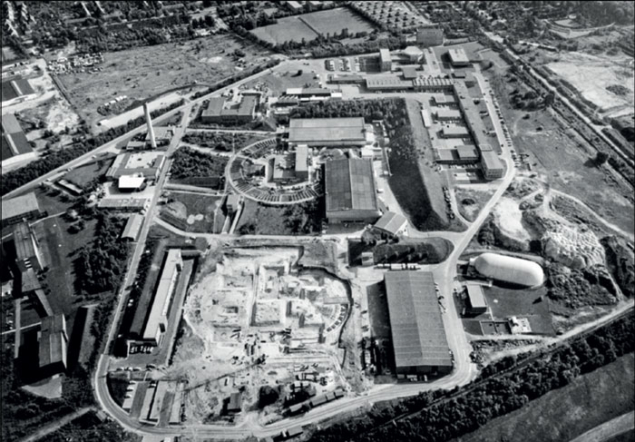
Image credit: DESY unless stated.
It is a seemingly simple question: when an electron scatters off a proton, how many photons are exchanged? The obvious answer would be: just one. Whether nature really acts as simply as this is, however, far from clear. The venerable storage ring DORIS at DESY is dedicating the last few weeks of its nearly 40 years of operation to this simple yet fundamental question. After three consecutive lives at the forefront of physics and with a wealth of scientific achievements, DORIS will be shut down for good at the end of 2012.
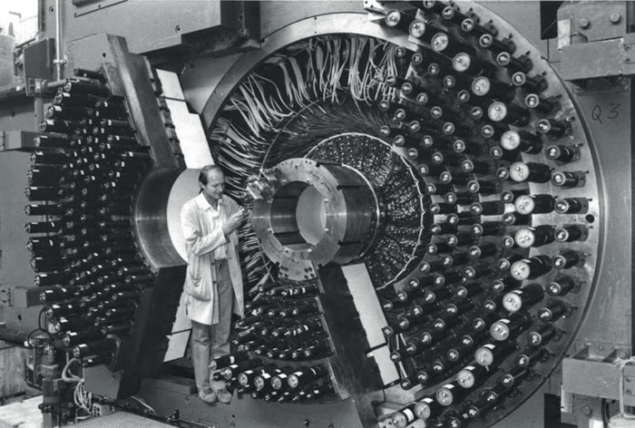
Image credit: DESY.
When DORIS ceases operation, it will leave behind some degree of nostalgia but most of all an invaluable scientific legacy in many fields. DORIS has been a pioneer in several ways: in accelerator science; in particle physics; and, notably, in the application of synchrotron radiation, where the machine helped spark a whole new field of photon science. “Synchrotron radiation measurements played an important role right from the start and the people working at DORIS fostered a creative spirit that let this young scientific field thrive,” says DESY’s photon-science director, Edgar Weckert. “This led to DESY becoming a global magnet for research with extremely intense X-ray light.” Indeed, various methods that today are standard techniques in photon science were developed at DORIS.
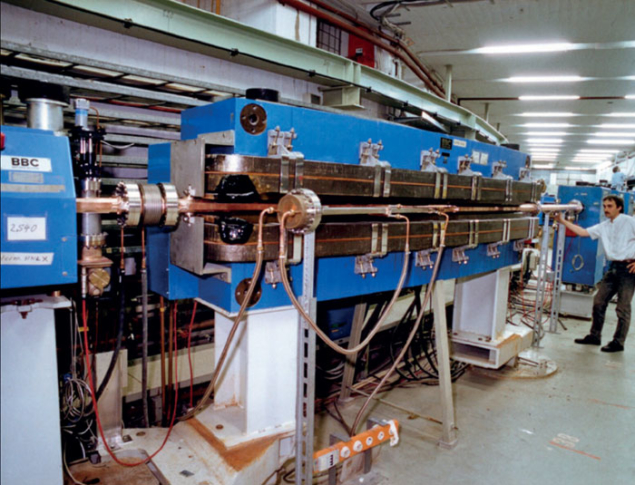
Image credit: DESY.
When DORIS went into operation in 1974, it was one of the world’s first storage rings. The concept of keeping the accelerated particles for repeated head-on collisions within the ring was only just beginning to compete with the practice of shooting them at a target all at once. Experience with DORIS certainly helped to develop this technology further. With a circumference of 289 m, DORIS started out in fact as two storage rings (hence the German name DOppel RIng Speicher, double storage ring) for electrons and positrons, with a maximum beam energy of 3.5 GeV each. However, because of technical difficulties, the machine was converted after three years into a single storage ring with two circulating beams.
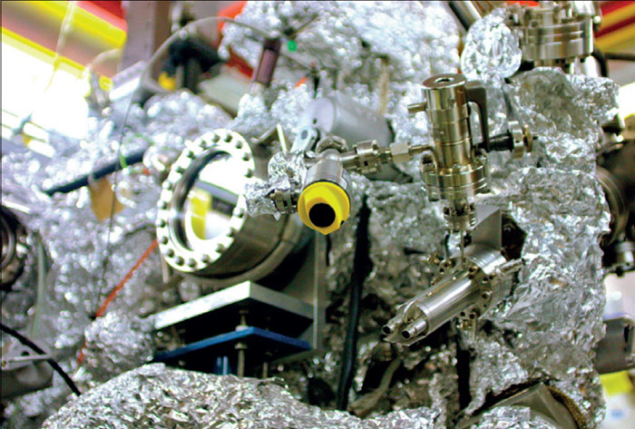
Image credit: DESY.
With its early particle-physics experiments, DORIS made important contributions to establishing the concept of quarks, which was still in question at the time. After the “November revolution” of 1974, when the unexpected J/ψ resonance was discovered at the Brookhaven National Laboratory and SLAC, DORIS helped to establish that the new particle was, indeed, a bound state of a new quark and its antiparticle, i.e. charm and anti-charm.
B-meson oscillations
In its second life, starting in 1982, an enhanced machine with a nearly doubled collision energy (compared with 1974) discovered and probed a host of new particles – and finally discovered spontaneous B-meson oscillations, probably the machine’s best known contribution to particle physics. The prolific ARGUS experiment at DORIS II observed that neutral B mesons spontaneously change into their antiparticles and vice versa. “The large mixing rate measured indicated that CP violation should also be observable in B-meson decays, which would be the second example of CP violation after the neutral K mesons,” explains DESY’s particle-physics director Joachim Mnich. CP violation is one of the pre-conditions to explain the observed dominance of matter over antimatter after the big bang. “The discovery at DORIS formed the foundation for further experiments, for instance with BaBar at SLAC and BELLE at KEK. But now we also know that the CP violation in the Standard Model is not sufficient to explain all of the matter in the universe. There have to be additional sources of CP violation beyond the Standard Model.” Today, B mesons and their oscillations are examined for instance by the LHCb experiment at CERN and soon also at the upgraded BELLE II experiment, in which DESY is participating.
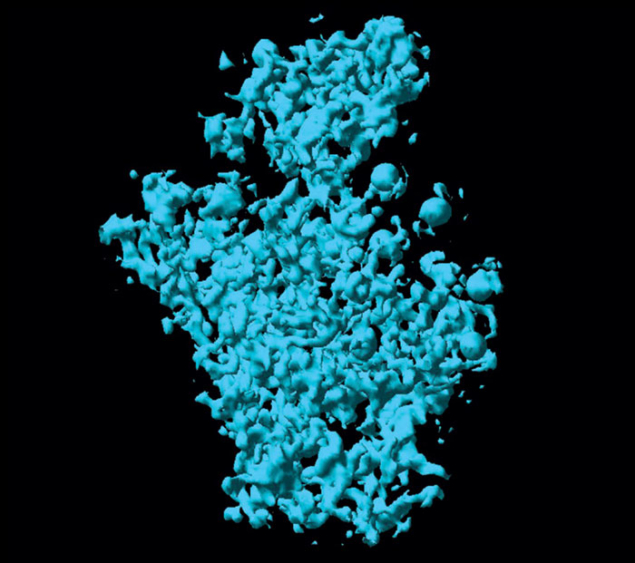
Image credit: MPG.
In 1991, DORIS was reborn in its third incarnation – as one of Europe’s brightest hard X-ray sources, bringing synchrotron-radiation applications and photon science to full bloom at DESY and beyond. There had been synchrotron-radiation measurements at DORIS right from the start in 1974, and only one year later the European Molecular Biology Laboratory (EMBL) established an outstation on the DESY campus to use the intense light for the investigation of biomolecules.
In 1980 the Hamburg synchrotron-radiation laboratory (HASYLAB) was founded, and while synchrotron-radiation techniques were constantly improving and their applications gaining weight, they were still riding piggyback on a particle-physics machine. This changed with the proposal of a DORIS “bypass” in 1986, specially designed to improve its synchrotron radiation. The northern straight section of the racetrack-shaped storage ring was to be replaced – or bypassed – by a 74-m-long, gently curved arc that offered space for additional wiggler magnets to enhance the quality and intensity of the X-ray beams. After approval of the plans, work began in 1990 and DORIS III went into operation only about a year later.

Image credit: DESY.
Unfortunately, the alteration had unforeseen consequences for the luminosity at ARGUS. Although the machine operators tried hard to improve this, the highly successful experiment had to stop taking data early because it was no longer competitive. In 1993 DESY decided to dedicate DORIS III exclusively to photon science, leaving particle physics to DORIS’ bigger sisters PETRA and HERA. Today, ARGUS graces DESY’s main entrance as a scientific landmark.
X-ray beams for all
During its lifetime, DORIS has peered into nearly everything imaginable with its X-rays, from innovative alloys and magnetic nanostructures to biomolecules, viruses and corals. Even bronze-age axes, mediaeval palimpsests and hidden paintings by Dutch master Vincent van Gogh have been screened at DORIS. Thousands of guest scientists have used the facility every year. Eventually, there were more than 30 beamlines at DORIS, offering all sorts of X-ray techniques, with many results having a benefit for everyday life. Researchers there have investigated new kinds of electronics and routes towards better catalytic converters, evaluated new welding techniques and more effective luminescent materials for energy-saving lamps, developed medical and technical X-ray applications and studied the properties of clusters of atoms and even of the Earth’s interior.

Image credit: DESY.
Among the countless scientific highlights, one in particular stands out. In 1999 the team of Ada Yonath, who was leading a Max Planck research group founded on the DESY campus in 1986, decoded the structure of the ribosome with the help of DORIS and different machines at other centres. The ribosome is the protein factory of the cell and is of central importance to life. It is an incredibly complex structure that seemed almost impossible to decode. “DESY provided us very generously with beam-time even back in the 1980s, when our project met worldwide scepticism as it was widely assumed that the structure of the ribosome might never be determined,” recalls Ada Yonath, who in 2009 received the Nobel Prize in Chemistry for her groundbreaking research.
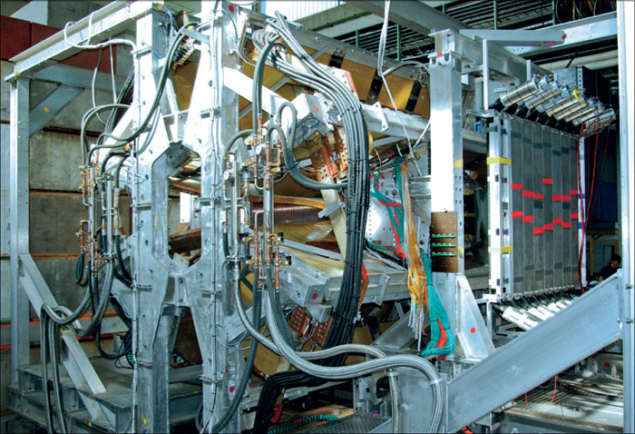
Image credit: DESY.
DORIS’s achievements are not only scientific. Over the years, the accelerator team maintained an innovative atmosphere and a remarkable collaborative spirit. Not only have several techniques that were pioneered at DORIS now become standards of photon science, the continued improvements also led to PETRA III, the world’s most brilliant X-ray source. Dedicated exclusively to photon science, PETRA III offers much more intense and much finer X-ray beams than DORIS, opening up new opportunities. “Some experiments, however, do not always require PETRA’s extraordinary brilliance,” says Wolfgang Drube of the DESY photon-science department. “Until now, these experiments have been located at DORIS.”
Profile of DORIS III
Type: storage ring
Particles: positrons
Circumference: 289.2 m
Beamlines: 33
Positron energy: 4.45 GeV
Initial positron beam current (5 bunches): 140 mA
Number of buckets: 482
Number of bunches: 1 (for tests), 2 and 5
Bunch separation (minimum): 964 ns (for tests), 480 ns and 192 ns
Horizontal positron beam emittance: 410 π nm rad
Vertical positron beam emittance: 12 π nm rad
Positron beam energy spread (rms): 0.11%
Curvature radius of bending magnets: 12.181 m
Magnetic field of bending magnets: 1.2182 T
Critical photon energy from bending magnets: 16.04 keV
To meet the continuing demand, DESY and its international partners are building two additional experimental halls at PETRA. The most successful of the DORIS III experiments will move into these extensions. “At several experimental stations, the beam will be up to 100 times more intense compared with DORIS,” explains Drube, who is leading the PETRA III extension project. This way, the best of DORIS will live on at PETRA III, which today is also complemented by DESY’s free-electron laser, FLASH. “The unique properties of our light sources are attractive for a multitude of research disciplines. Co-operation and exchange in these various disciplines stimulate research in the next generation,” stresses Weckert.
At the end of its lifetime, there is one more “half-life” in store for DORIS. Synchrotron-radiation operation ceased on 22 October but the rest of the year has been dedicated to a small but clever particle-physics experiment called OLYMPUS. The collaboration led by Richard Milner of Massachusetts Institute of Technology (MIT) will use it to compare in detail the scattering of electrons and positrons by protons to find out if more than one photon can be exchanged in this process. “Recent data suggest strongly that higher-order photon exchange is happening in certain situations,” says Milner. “The experiment is to measure the angular distribution of the scattering for electrons and positrons and compare it. If two-photon effects indeed are there, we should see a significant difference of the order of 5% at larger angles – that is around 60° – in this comparison.”
That this became possible is owed to a coincidence that Milner refers to as a miracle. His team had realized that the experiment that they wanted to do would be possible with a disused particle detector from MIT, and they were looking for a storage ring where intense electron and positron beams were readily available. “So, we came to DESY to discuss this and together we decided that we could attempt the experiment at the location of ARGUS. The miracle was that an experiment designed at MIT in the 1990s to do electron–proton scattering would fit exactly in the footprint of an experiment designed at DESY in the 1980s to look at things like B mixing. Essentially, you took one out and dropped the other one in. Everything fit on the rails of ARGUS!”
OLYMPUS may be DORIS’ last experiment but the legacy of this machine will live on for a long time.








